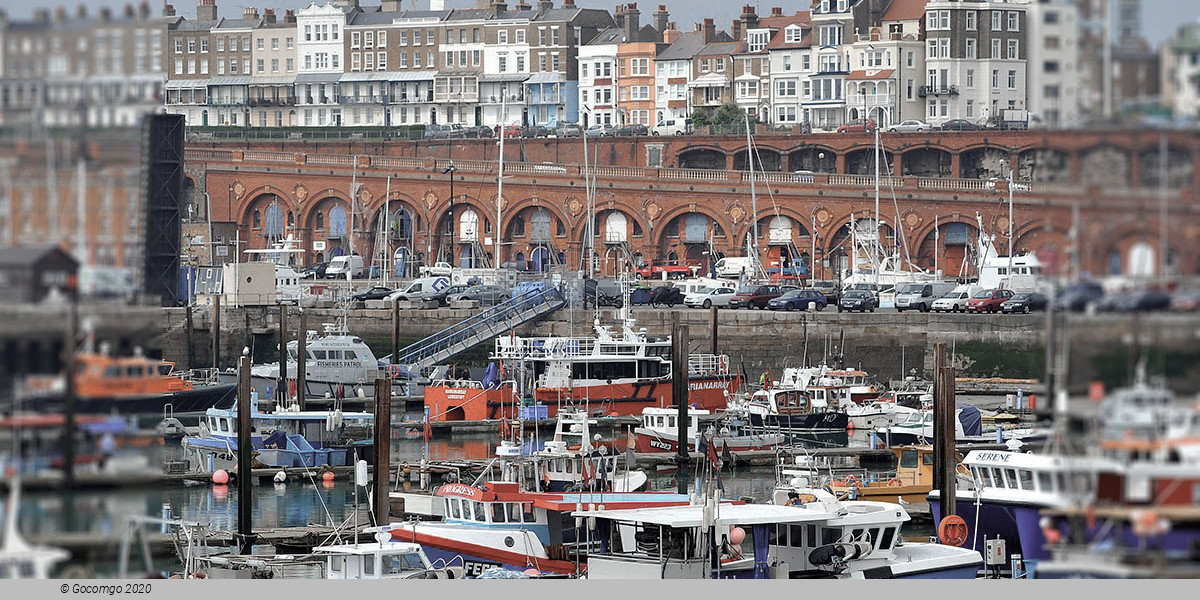Ramsgate

Ramsgate is a seaside town in the district of Thanet in east Kent, England. It was one of the great English seaside towns of the 19th century. In 2001 it had a population of about 40,000. In 2011, according to the Census, there was a population of 40,408. Ramsgate's main attraction is its coastline, and its main industries are tourism and fishing. The town has one of the largest marinas on the English south coast, and the Port of Ramsgate provided cross-channel ferries for many years.
Ramsgate began as a fishing and farming hamlet. The Christian missionary St Augustine, sent by Pope Gregory the Great, landed near Ramsgate in 597AD. The town is home to the Shrine of St Augustine. The earliest reference to the town is in the Kent Hundred Rolls of 1274–5, both as Remmesgate (in the local personal name of ‘Christina de Remmesgate’) and Remisgat (with reference to the town). The names Ramisgate and Raunsgate appear in the parish of St. Laurence records circa 1290. These are all derived from late Anglo-Saxon ‘Hremmes’ from earlier ‘Hræfnes’ (raven's) and ‘geat’ (gate), with reference to the gap in the cliffs. In 1357, the area became known as Ramesgate. Ramsgate was a member of the Confederation of Cinque Ports, under the 'Limb' of Sandwich, Kent. The construction of Ramsgate Harbour began in 1749 and was completed in around 1850. The harbour has the distinction of being the only Royal Harbour in the United Kingdom. Because of its proximity to mainland Europe, Ramsgate was a chief embarkation point both during the Napoleonic Wars and for the Dunkirk evacuation in 1940.

